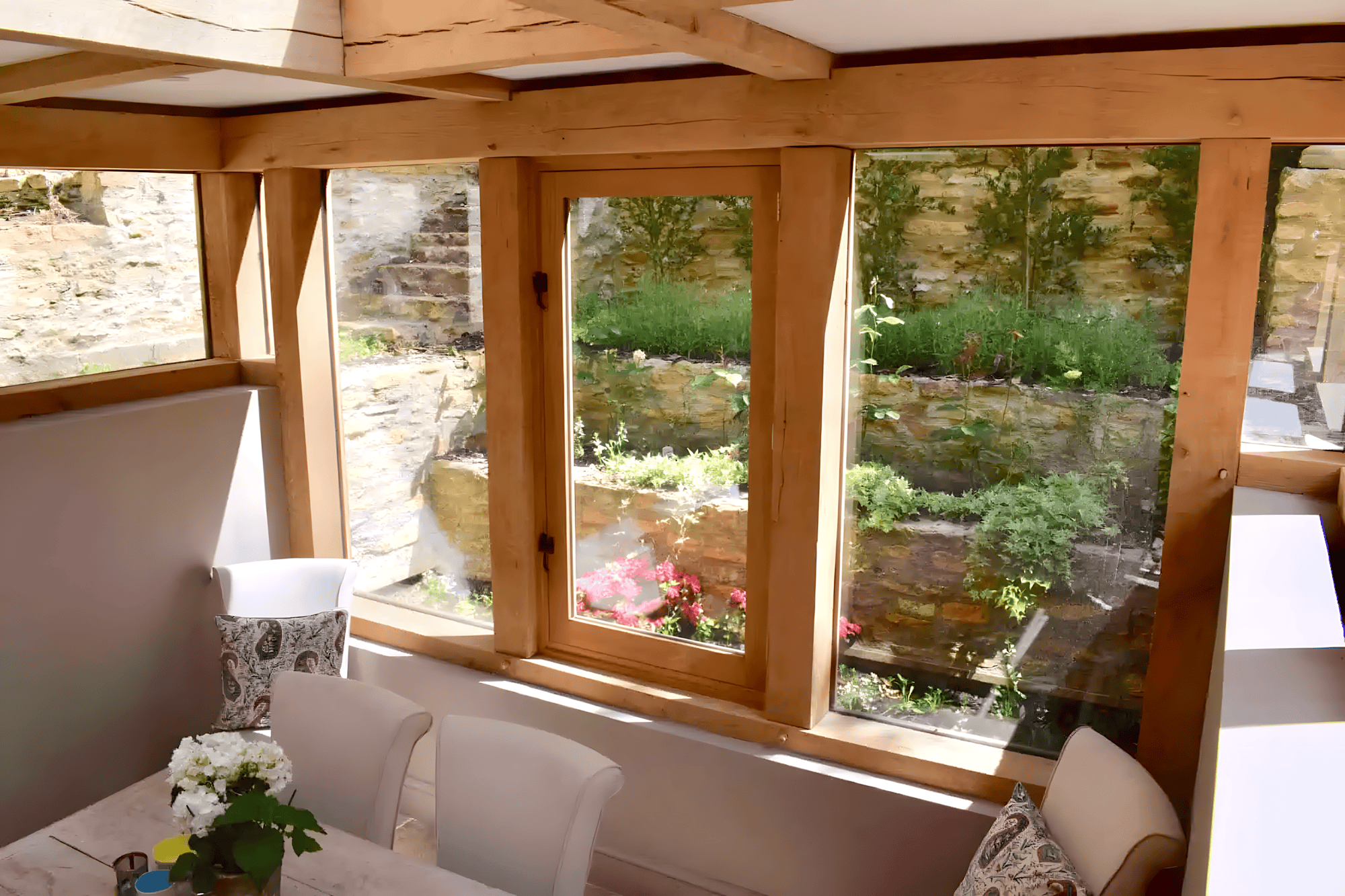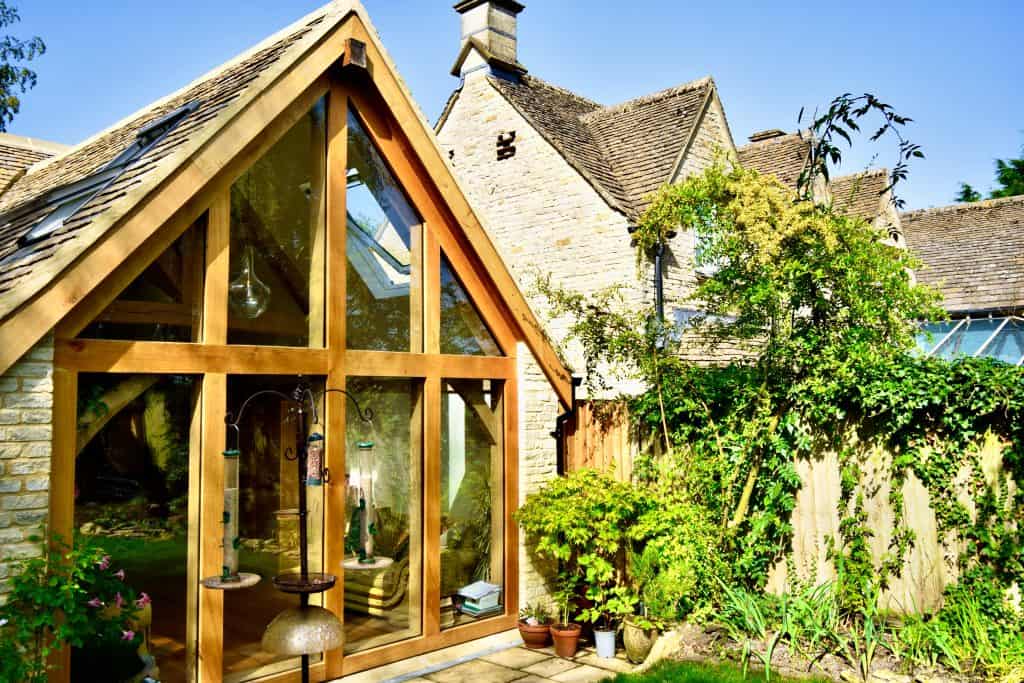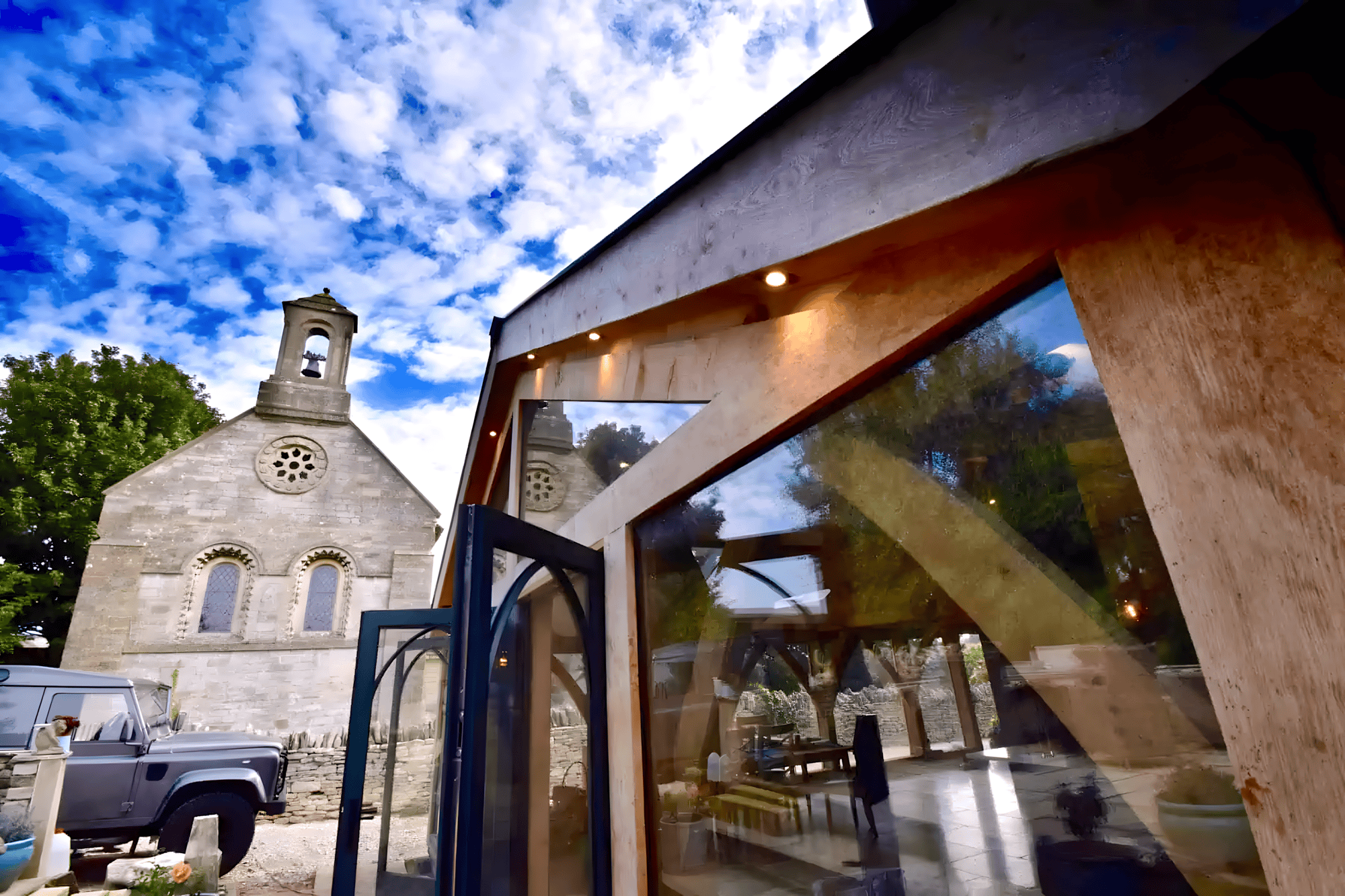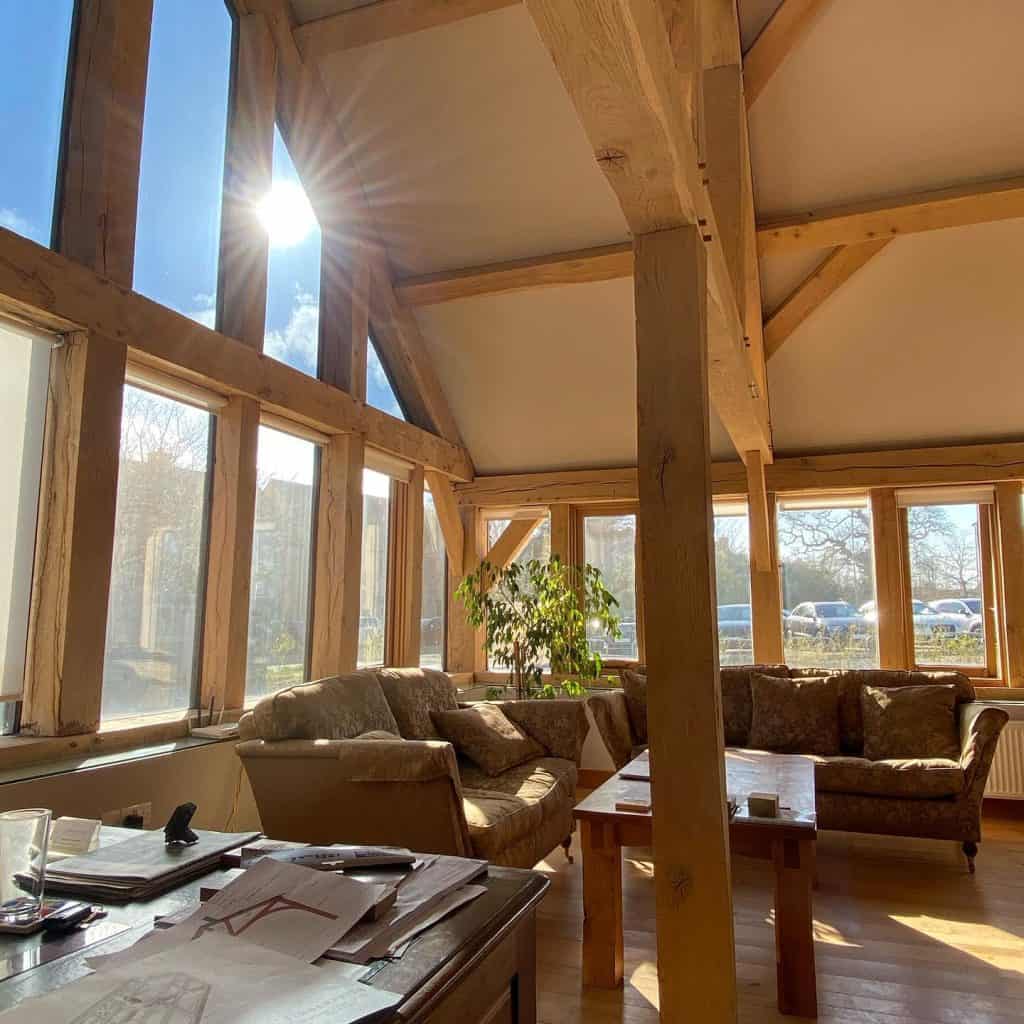The fundamental principle here is that structural Oak must only perform its structural work—keeping the building standing—while joinery Oak must do its job of keeping the weather out. This is because a structural beam will develop splits and move as it dries, and the mortice and tenon joints cannot be expected to be watertight. Achieving a weather seal between glass and wood can only be done with joinery-grade Oak, similar to how it’s done in ordinary windows.
Fixed Face Glazing
Introduction to Oak Frame Glazing
Flooding your Oak frame home with light by glazing entire elevations is not only visually stunning but also allows you to enjoy much more of the views from inside. Surprisingly, it’s also a cost-effective alternative to building up an insulated partition with external cladding.


Ensuring Precision and Seal Integrity in Glazing
At Timberpride, we glaze our own frames because we carefully choose the beams that will carry the glass, avoiding knots that could break the seal or beams that might bend too much as they dry. We only trust our framers to work to our high standards.

Exceptional Glazing for Oak Frames
For your Oak frame home, choosing fixed face glazing is more than an aesthetic decision; it is a sustainable and durable choice. Therefore, for its ability to stand up to pest attacks, diseases and harsh weather conditions that might impair your glass, oak would be the best choice. Moreover, fixed face glazing adds significantly to the visual attraction and also provides great strength.
Oak’s natural resistance to decay makes it perfect for outdoor applications, ensuring lasting beauty and integrity. Choosing Timberpride’s fixed face glazing means investing in long-lasting materials and supporting eco-friendly practices. Our high-grade English Oak undergoes meticulous selection and processing, ensuring unparalleled durability and performance.
Everything is bespoke
Timberpride has been supplying direct glazing solutions for 20 years, we are truly experts in the field. We plank the highest-grade English Oak logs to 45mm thicknesses and sticker them to air dry for a minimum of one and a half years. We then kiln dry them slowly (in our biomass-heated kiln) for three months to bring their moisture content down to a uniform 14 – 16%, depending on the time of year.
Precision Craftsmanship
These boards are then ripped to width, planed, and profiled to rectangular sections for vertical boards and parallelogram sections for horizontal boards. They are fitted with hidden stainless steel fixings and compound angle joints, shaped to fit closely against masonry to produce an unrivalled finish.
Frequently Asked Questions
Face glazing wood is our method of attaching glass directly to the exterior of oak frames using air-dried English oak cover boards. This creates a weathertight seal with closed-cell memory foam between the oak and glass, allowing the timber to move naturally without stressing the glass. It also protects the internal mortise and tenon joints from weather exposure.
Glazing brings natural light into your oak-framed building, enhances insulation, and improves energy efficiency. It keeps your conservatory or extension warm in winter and cool in summer, reduces drafts, and highlights the beauty of the oak frame while offering lovely views of your surroundings.
We specialise in fixed face glazing, where glass is clamped onto the oak frame using cover boards for a weathertight seal. Other methods include rebated glazing, which involves setting the glass into grooves cut into the frame, and fitting double or triple-glazed units within the timber. The choice depends on your design preferences and performance needs.
Glazing an oak frame involves positioning the glass panes onto the frame with closed-cell memory foam seals and securing them with air-dried English oak cover boards. This method accommodates the natural movement of the timber without stressing the glass. All edges are then sealed to prevent moisture ingress, ensuring durability and a flawless finish.
Yes, it’s possible to retrofit old timber windows with double glazing to improve insulation and energy efficiency. By fitting new double-glazed units into the existing frames—provided they’re in good condition—you can reduce heat loss and drafts while preserving the character of your home.
Visit Us for a Coffee and a Tour!
Discover the craftsmanship behind Timberpride’s exceptional timber products firsthand. We invite you to pop in for a coffee and explore our showroom.
While you’re here, enjoy a guided tour of our workshop and see our skilled artisans in action. We look forward to welcoming you!

Produced to Order by Specialists who Care
Our experienced carpenters are experts in fixed face glazing, so each installation takes into account the movement of the oak and the weather-tight seal. The glazing is attached directly to the oak frame using joinery grade cover boards, high performance glazing tapes and gaskets to allow for the timber’s natural expansion and contraction.
In our Tetbury workshop we use the best British oak, milled and graded in-house to the highest standard. Detailed scale drawings ensure dimensional accuracy, so your fixed face glazing is both beautiful and durable, a sustainable and reliable choice for your oak frame building.
Alec & Victoria Golesworthy

